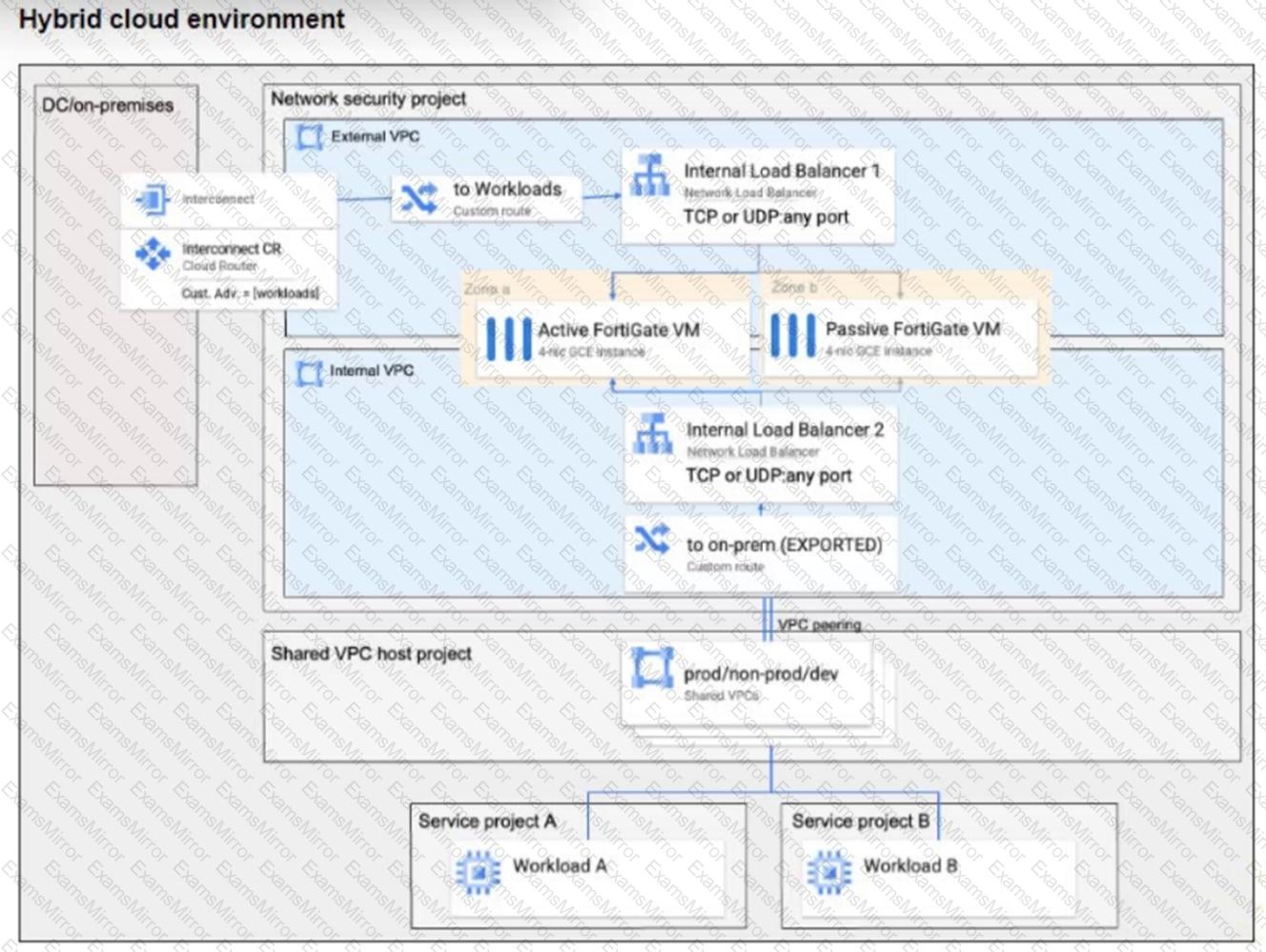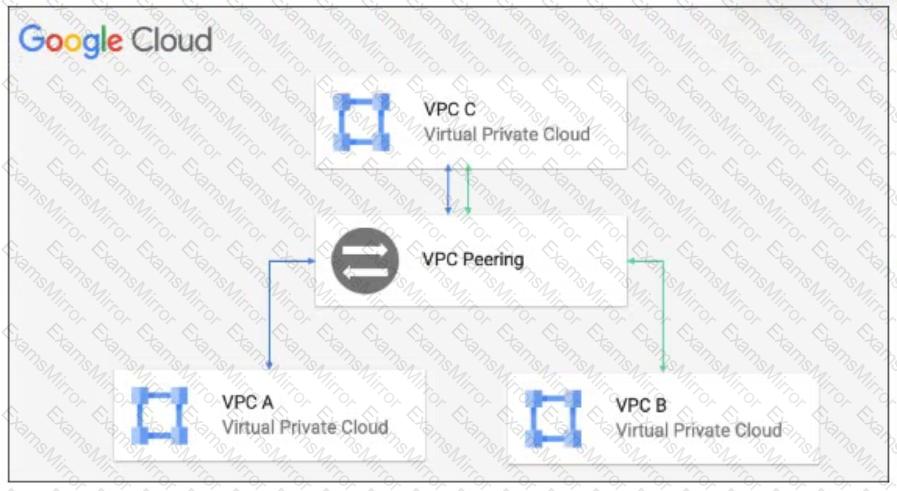Cyber Monday Special Limited Time 70% Discount Offer - Ends in 0d 00h 00m 00s - Coupon code = getmirror
Pass the Fortinet Public Cloud Security FCP_GCS_AD-7.6 Questions and answers with ExamsMirror
Exam FCP_GCS_AD-7.6 Premium Access
View all detail and faqs for the FCP_GCS_AD-7.6 exam
544 Students Passed
94% Average Score
95% Same Questions
Your organization is running an application in their shared services virtual public cloud (VPC) and must control network access natively in the cloud.
How can your organization meet this requirement?
Refer to the exhibit.

Which two types of traffic flow must the FortiGate cluster inspect, if the client at 198.51.100.10 sends traffic to the Workload A instance? (Choose two.)
Your organization has decided to deploy a high-availability (HA) cluster. One kye requirement of the deployment is to support configuration synchronization.
Which three deployment types should be considered? (Choose three.)
Google Cloud network services offer vast functionality and inter-connectivity between the cloud and on-premises networks.
Which three additional functions does FortiGate offer when deployed in Google Cloud to complement the native services offered by Google Cloud? (Choose three.)
Your organization has decided to deploy a Fortinet web application firewall (WAF) in Google Cloud.
Why would the organization choose FotiWeb Cloud over FortiWeb VM?
Your organization has deployed an active-active high-availability (HA) FortiGate cluster in Google Cloud. You have noticed a significant increase in asymmetrical traffic flow.
Which two actions can you take to mitigate the issue? (Choose two.)
Which Fortinet proprietary protocol do you use when deploying an active-passive high-availability (HA) cluster in Google Cloud?
An organization is deploying an active-passive high availability (HA) cluster using passthrough load balancers in Google Cloud.
What is a critical factor for ensuring successful HA formation, failover, and traffic flow?
Refer to the exhibit.

In this hybrid environment, in which two ways does the traffic flow from a network node in the on-premises network to Workload B in Google Cloud? (Choose two.)
Refer to the exhibit.

Which action must the administrator take to route traffic from VPC B to VPC A?
TOP CODES
Top selling exam codes in the certification world, popular, in demand and updated to help you pass on the first try.
